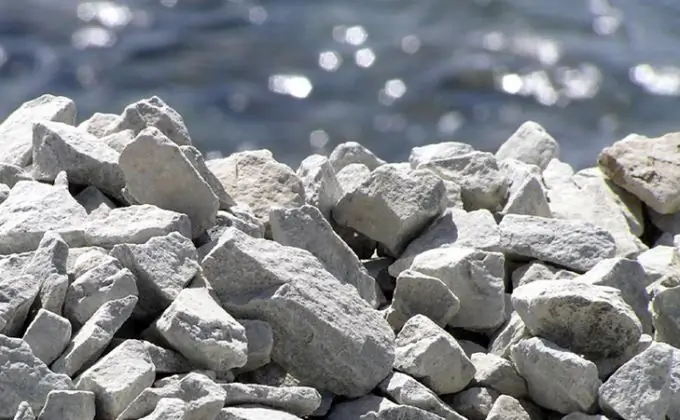Crushed stone in concrete is a large aggregate. This stone has its own requirements, as it provides the strength of concrete products. Granite crushed stone has the best performance characteristics.

Crushed stone is a product of rock processing. There are several types of this stone, and they all have high strength characteristics.
Why is crushed stone added to concrete?
The strength of any stone is many times greater than the strength of the highest quality concrete. Therefore, to increase resistance to weight and other loads, crushed stone is added to the cement-sand mortar. This concrete is called heavy. Reinforcement or other metal rods are laid in it and reinforced concrete products are made: rings, building blocks, floor slabs, etc.
Crushed stone is a large aggregate, fine is sand. The concrete grade depends on the strength of the stone and the type of cement used. The average fraction of crushed stone is used as a filler - 20/40 mm. It can be of different strength, depending on the type of rock from which it is made. In some cases, the hardness of the stone can reach 1000 MPa and higher. This aggregate is used to make the highest grades of concrete.
For laying in a cement-sand mortar, crushed stone from ferroalloy and blast furnace slags, copper smelting and nickel is also suitable. It can be used for erecting foundations and forming building blocks. Before use, crushed stone of this type must be tested for the absence of radiation in it.
Another reason why crushed stone is part of the concrete is the significant shrinkage of the cement when it hardens. The aggregate interferes with this process and prevents the cement from cracking. In construction work, they are guided by the following rule: the greater the thickness of the concrete layer, the larger the aggregate fraction should be. The amount of crushed stone or gravel on average should be at least 30% of the total volume of cement-sand mortar.
The shape of the crushed stone laid in concrete is also important. The closer it is to square, the more stones will fit in the solution. Therefore, it will be stronger. The cost of such material is slightly higher than that of ordinary crushed stone. When buying stones, pay attention to the percentage of harmful impurities in them. There are standards that determine the permissible mineralogical composition of the aggregate. In accordance with them, crushed stone for concrete should contain no more than 1.5% sulfites, 4% pyrites, 1% coal, etc.
Which crushed stone is stronger?
The highest concrete strength is provided by crushed granite. It has the best performance characteristics. But this stone is one of the most expensive, therefore, it is rarely used for laying in a cement-sand mortar. Its more common use is as a decorative element in landscape design.







